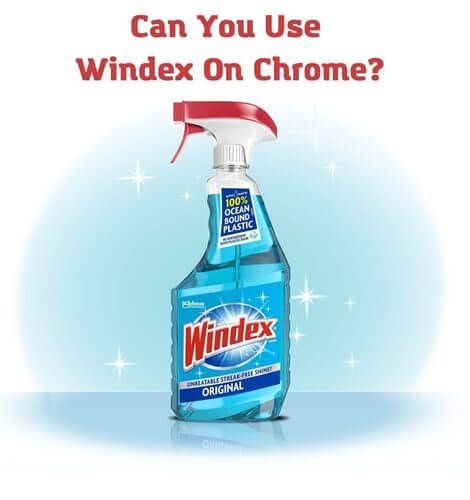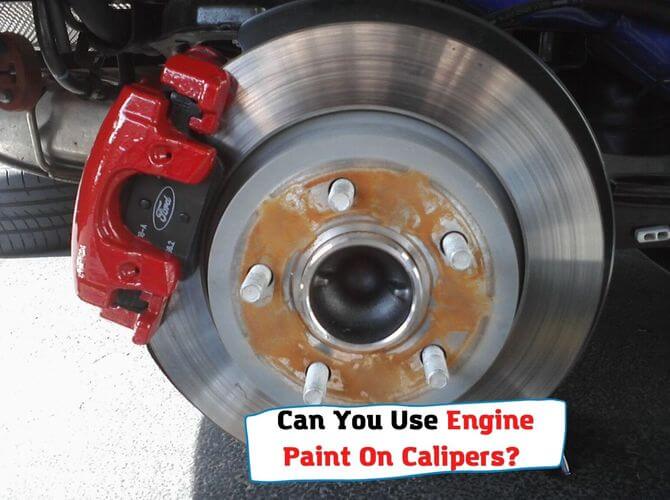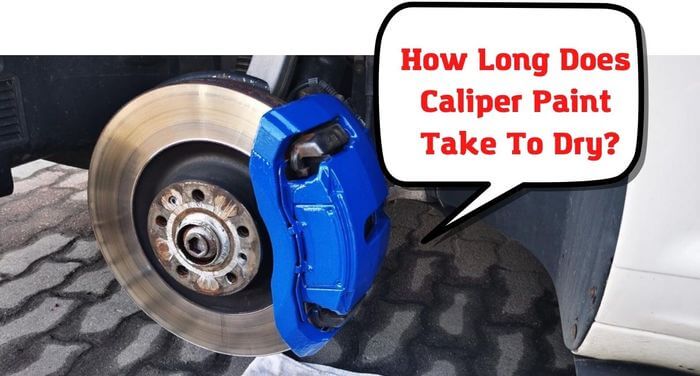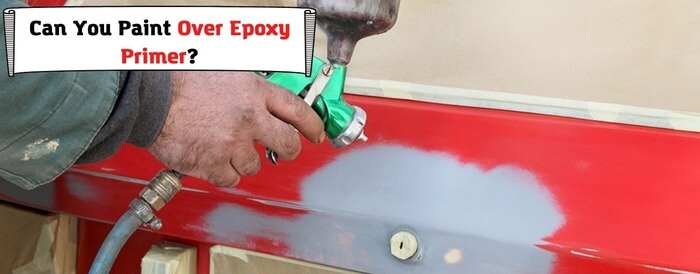Nobody wants to wake up to a car, furniture, or windows with overspray. Those uninvited sprinkles of paint from previous painting jobs can be a total eyesore, especially when caught by your car or well-cared-for exterior, not to mention the possible damages when removing them.
So if you refuse to pay for professional services and prefer a DIY route, you may think a buffing tool may solve your problem.
To answer your question, yes. You can use a buffing tool for overspray removal, but with crucial factors to consider. So before you take out some buffing pads and your buffer, keep reading. We have compiled all the overspray removal information you need to know in this article.
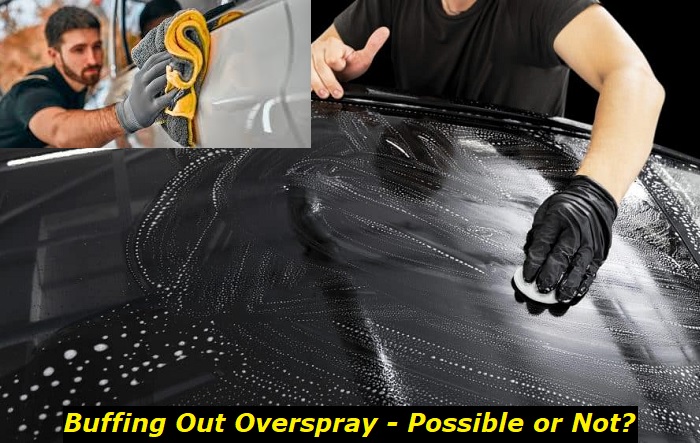
What is an overspray?
Overspray is the unintended deposition of several substances like paint and coating to surfaces or areas not included in a painting job. The surface catches the mists through sprayers or aerosol cans, even if you performed protective measures on the surrounding areas.
The problem with overspray is it can be challenging to remove. Aside from the unsightly display, it can damage the surface and, worse, remove the protective coating in your car or glass.
What is Buffing Machine and Where Is it Used?
For cars, removing overspray could mean expensive fees and repair costs. Even if the overspray lands on your premise’s exteriors or furniture, you have no choice but to hire professionals to protect their coats and preserve their quality.
But what if you can use a buffing tool after all?
A buffing tool is a machine used to buff or polish surfaces to achieve a smooth and glossy finish. In automotive, a buffing tool helps remove swirl marks, light scratches, paint imperfections, and rust.
Naturally, anyone may think this tool can be perfect for removing overspray. However, a buffer could be problematic over protected surfaces like car painting or furniture.
Why is buffing overspray problematic?
A buffing tool uses a buffing wheel that rubs over the surface when turned on. It rotates and scrubs the surface according to the speed set on the tool. Because of this mechanism, it creates an abrasive action that is potentially harmful to the surface. It can remove the protective coating or the tint in your windows.
Another problem with buffing out overspray is it could spread the overspray instead of removing them. Moreover, a buffing tool works only for specific surfaces. Those surfaces that can withstand abrasion are more applicable for a buffing tool.
Can you Buff Out Overspray?
You can buff out overspray, given the circumstances are favorable.
However, you should not start the removal process with buffing. You need it to soften by cleaning and dampening it with water and a mild cleaner. Unless the overspray is still fresh, you can buff the surface. Buffing is more advisable to use on fresh overspray. If the overspray has fully cured, you might have trouble removing it with a buffer. It still depends on many factors.
Factors to Consider Before Buffing Out Overspray
1) The type of paint
Not all types of paint are workable with a buffer. In general, water-based overspray paint is easier to remove with a buffing tool than oil-based paint. The paint could be epoxy, powder, or ceramic coat, or industrial paint will not work with buffer for overspray removal.
2) The surface
A glossy surface works well with a buffing tool. Because of its smooth surface, a buffer will be less forgiving and may reduce the risk of scratching the area or marring the finish. That’s not the case for a matte surface. Matte surfaces could easily show swirl marks left by a buffing tool when trying to remove overspray. Also, it may alter the appearance of a matte finish, removing its matte look.
3) Extent of overspray
The extent of damage tells you how much time and effort you will need to remove the overspray. Using a buffing tool requires preciseness and control for polishing. But if you use it for removing overspray, you must be more careful than how you would when smoothening the surface. A high-speed buffing tool will surely damage the surface if you are not skilled enough to use it.
4) Existing surface condition
Check for imperfections in the area. Deep scratches require more attention, and buffing may not be enough to restore the surface. In reality, a buffer needs additional removal steps before you can use it. If not, buffing the overspray may worsen it.
5) Your buffing expertise
If you’ve seen professionals buffing out overspray and think you can also do it, think again. It needs expertise, technique, and skill to use a buffing tool for overspray removal. The job requires preciseness and control while preventing abrasion on the surface. If you are not confident with your buffing skill, it is better to seek help from an auto detailer.
How to Buff Out Overspray?
Using a buffer is pretty straightforward. But starting with this tool is not advisable. You want to soften the overspray or remove it with a clay bar first. If the overspray is fresh, you may be good with an appropriate buffing compound and the tool. But if the overspray has cured, you can use a solvent safe for the surface. However, some solvents are harsh on the surface. So be careful.
In general, a good way to use your buffer to remove overspray is after softening and cleaning the surface.
- Use mild cleaners and solvents to clean and soften the paint.
- Check if the overspray softened enough.
- Attach the buffing pad and apply the buffing compound to the foam. You need medium-cut foam. Spread it evenly on the foam.
- Test on an unobtrusive area. Set your tool on the lowest speed and start buffing. Inspect.
- If the buffer works from your testing, move on to the main area and remove overspray.
- Apply a small overlapping buffing motion from one section to another to spread the compound evenly. Use light pressure. Check its progress from time to time. If you need to increase the speed and more passes, do so.
More Appropriate Ways to Remove Overspray
You see, using a buffing tool requires skill and expertise. However, there’s a more gentle and efficient way to remove overspray.
1) Using a Clay Bar
Using a clay bar is the most efficient way to remove overspray and contaminants. It works by trapping contaminants and overspray into its elastic mold. It picks up them by sticking and trapping them, preventing scratches and damaging the surface.
Aside from the clay bar, you also need a lubricant, mild car wash soap, and clean microfiber towels.
- Wash your vehicle to clean impurities like dust, debris, and any form of contaminants.
- Take a clay bar from a container. Ensure to use properly stored clay bars because they are clean.
- Apply lubricant depending on the surface. You may need to use a lubricant for glass or an auto body.
- Gently rub the clay bar on the surface. It feels rough if the overspray has not stuck on the clay. If it is already smooth, you have removed the overspray.
- Bend and twist the clay bar to switch to clean parts of the clay without overspray. Do this as you remove the overspray smooth until the clay bar has no more room for overspray or until you have removed all the overspray.
- Spray cleaners to remove residue and wipe it off.
Clay bar is proven to be the most effective way to remove overspray. Use it with precaution. Avoid using a coarse clay bar because it may scratch the surface. Use a medium-graded clay bar instead for milder overspray removal.
2) Using Chemical Solvents
Solvents are great tools to soften dried overspray. However, you must research the type of paint you will remove and how it may affect the substrate.
Alcohol:
For example, rubbing alcohol is effective on latex overspray paint. When you apply alcohol, it should loosen up after application. Put a small amount on the affected area. It only takes about a minute to soften up, then wipe a clean rag and rinse.
Lacquer thinner:
Lacquer thinner works perfectly for paint removal. It can dissolve paint and is a great cleaner for painted equipment. However, you need to use it with caution. If you will use it in your car, test it in a small area first.
Simply pour the liquid on the rag, not the car surface, and wipe the paint off. Rinse the surface with clean water.
Other solvents caution:
There are many solvents you can use to remove overspray. However, you should pay attention to the surface they work with and the type of paint they remove. Overspray can land on anything.
If the clay bar is too mild to remove stubborn overspray, your next choice is a lacquer thinner.
If you use acetone over car paint, put a small amount on the rag and lightly scrub it on the overspray. Avoid letting it sit on the surface longer. Work on small sections. Wipe, and rinse. Acetone is a potent solvent. It can damage the base paint.
WD-40 may be safe for your car initially. It can remove tar and overspray. If you wish to use it, pour it on the towel, not the car’s surface. Work in small sections and only on the overspray. Using it once will not damage the car immediately, but it is not advisable for long-term use.
Can you use a razor blade to remove overspray? The razor blade is damaging to car paint. Some people use it on window glass with a glass lubricant. To use it, apply lubricant to the affected area. With extra caution, only use a single-blade razor to lift the overspray, meaning not scrubbing it on the surface. Do not use it on the auto body.
To Wrap it Up
Catching overspray is not the end for your car or any surface. There are ways you can remove it, and you can always opt for the DIY route. As a reminder, always start with the gentle option. Opt for mild cleaning solutions. Choose the less abrasive ones. Sometimes you can use things you find at home, like alcohol or vinegar. All it takes is understanding the surface, the type of paint used, and the extent of the damage. And you’ll have your car restored to its previous state.
- Can You Unmix Paint: Techniques, Consequences, Alternatives - February 23, 2024
- Does Primer Need to be Mixed? Effective Primer Application - February 22, 2024
- How to Make Old Paint Usable Again: Retrieving and Preserving Paint - February 21, 2024
